Thinking backwards
The best way to think through problems is to begin from the end, from what you wanna get as a result. To start from the finish.
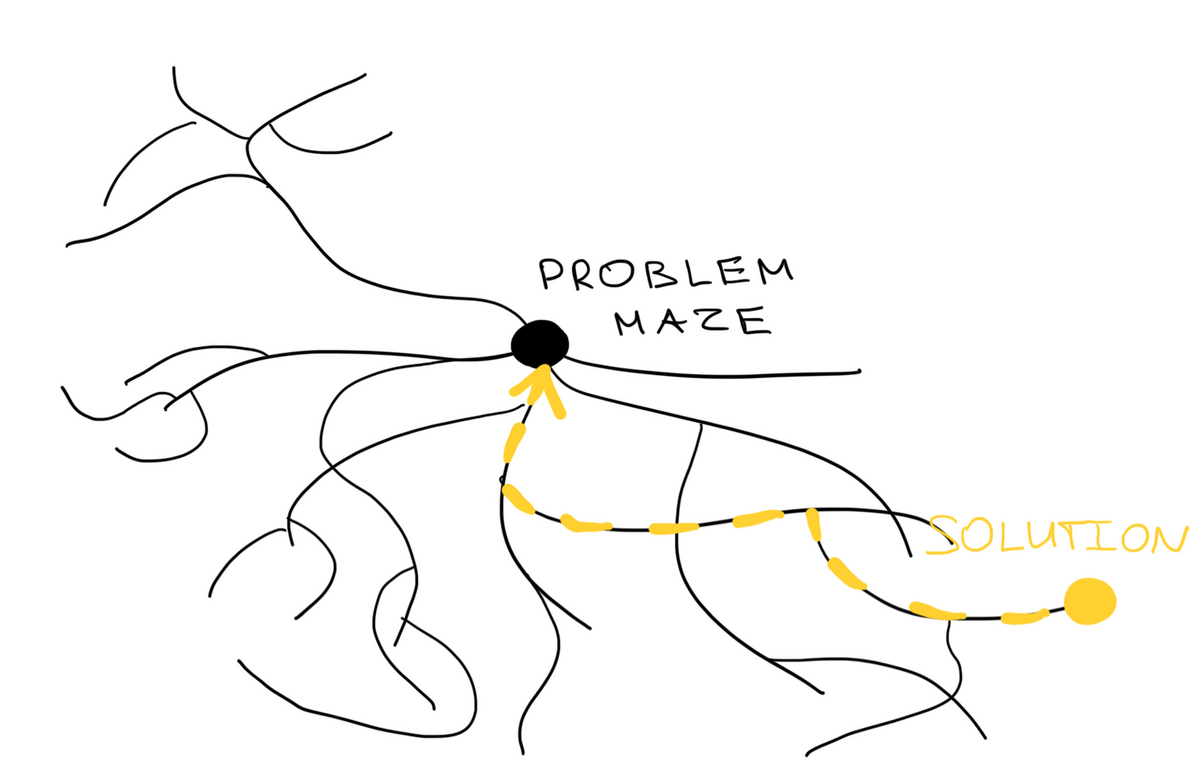
Today, I will cover how to think backwards through problems. Thinking backwards instead of brainstorming options has high suggestive value, starts you on the right track, and lets you apply inversion to identify what might go wrong. I close with an example of how to think backwards through landing a dream job.
Table of contents:
- Why brainstorming is bad for complex problems
- How to bring back from the river 6L of water if you only have 9L and 4L buckets
- Why to always start from the cheese instead of the mouse
- How to plan projects by thinking backwards
- Why planning is more important than execution
- How to land a dream job
Enjoy your reading.
Why brainstorming is bad for complex problems
Let’s begin with a problem.
You’ve got two empty water buckets. One is 4L, and another one is 9L. Your goal is to go to the river and bring back precisely six liters of water. You can’t fill in the bucket imprecisely; you need to somehow have exactly six liters. How do you do that?
Now pause and think for ten seconds before jumping to the next section.
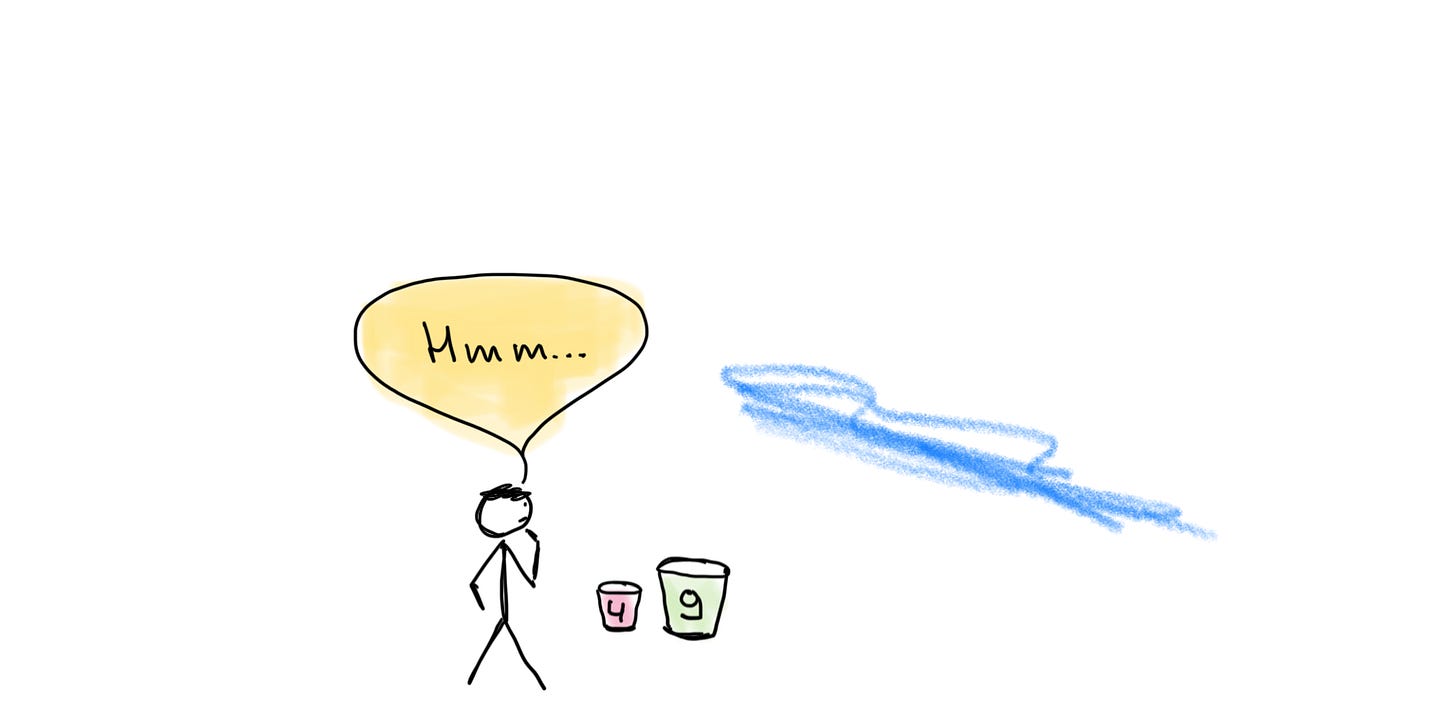
If you failed to solve the problem, that’s good. I didn’t make it either when I first heard of it. It’s designed to show how inefficient your default thinking method is.
If you’re anything like me, you started brainstorming.
“Oh I can fill in 9L and then take out 4, and that’d be five.. but hell, how do I get one more?”
Now think of it this way.
Every problem has a space of potential solutions that looks like a maze. When you brainstorm, you begin in the middle and try each of those paths one by one. You have no idea where to go.
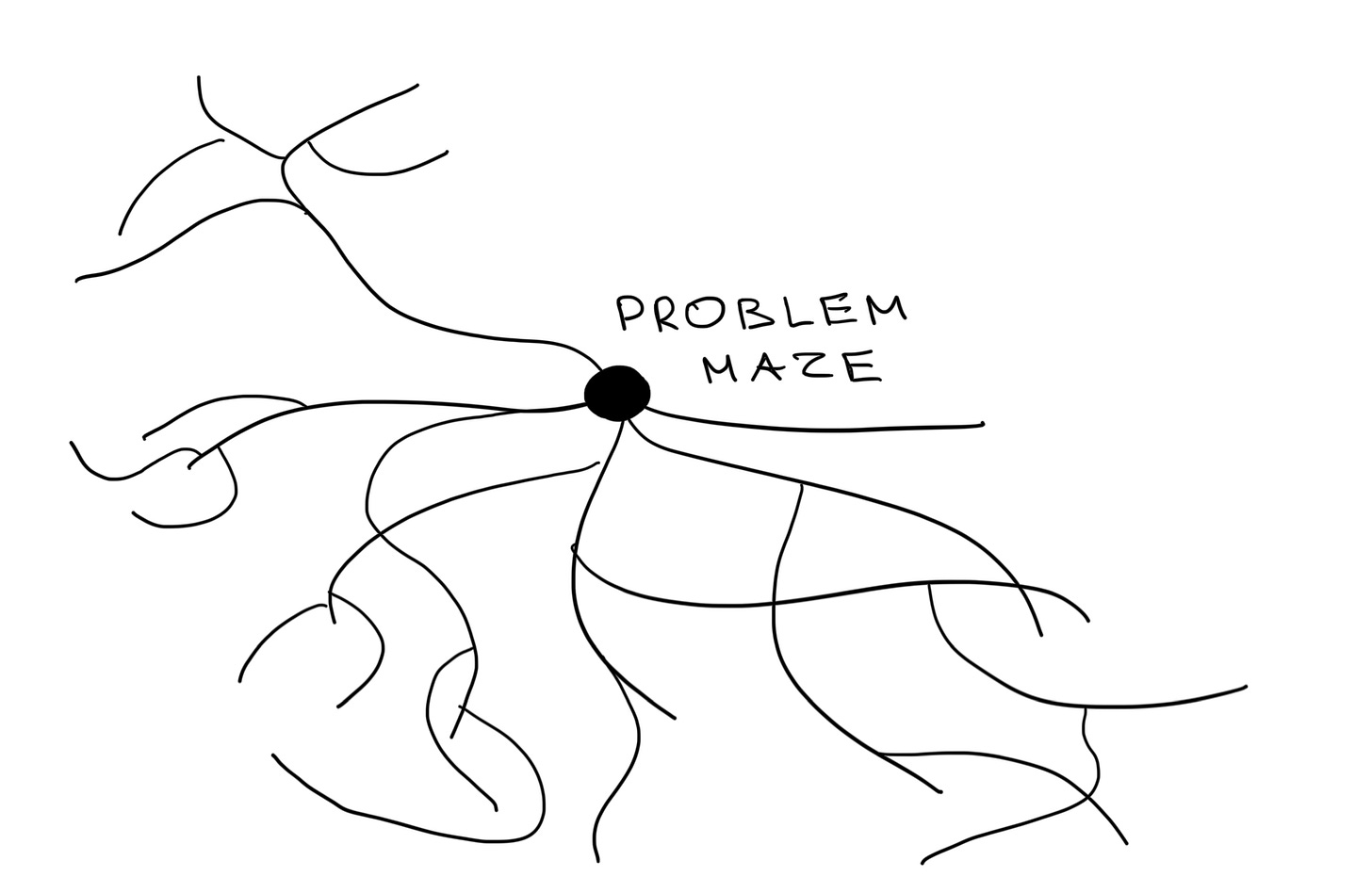
Brainstorming might work if the number of potential solutions is small.
Let’s say you’ve got a bunch of keys, and you need to open a garage door. If you forgot the right one, you can quickly try all of them and figure it out in a minute. That’s a good problem for brainstorming.
But complex problems never have five potential solutions. And if the number of options is in thousands, then brainstorming starts being useless and even harmful because you waste time.
That’s why the best way to think through problems is to work backwards. This means that you must begin from the end, from what you wanna get as a result. To start from the finish.
If you do that, then you’re already on the right track. You don’t have to go through each option but only figure out how you got to the finish line. And that’s a much easier problem to solve.

Let’s jump back to our water buckets problem.
If we have 9L and 4L water buckets, then the only way we can get back from the river with 6L of water is by having 6L in the big one. There’s no way we can have 6L of water in a 4L bucket so we can trash that option instantly.
That’s the end result. That’s the solution we aim for; to somehow have 6L of water in that big 9L water container. So that’s precisely where we need to start solving the problem.
You can pause reading here and try working the problem for yourself before continuing.
That’s how you’ll learn better.
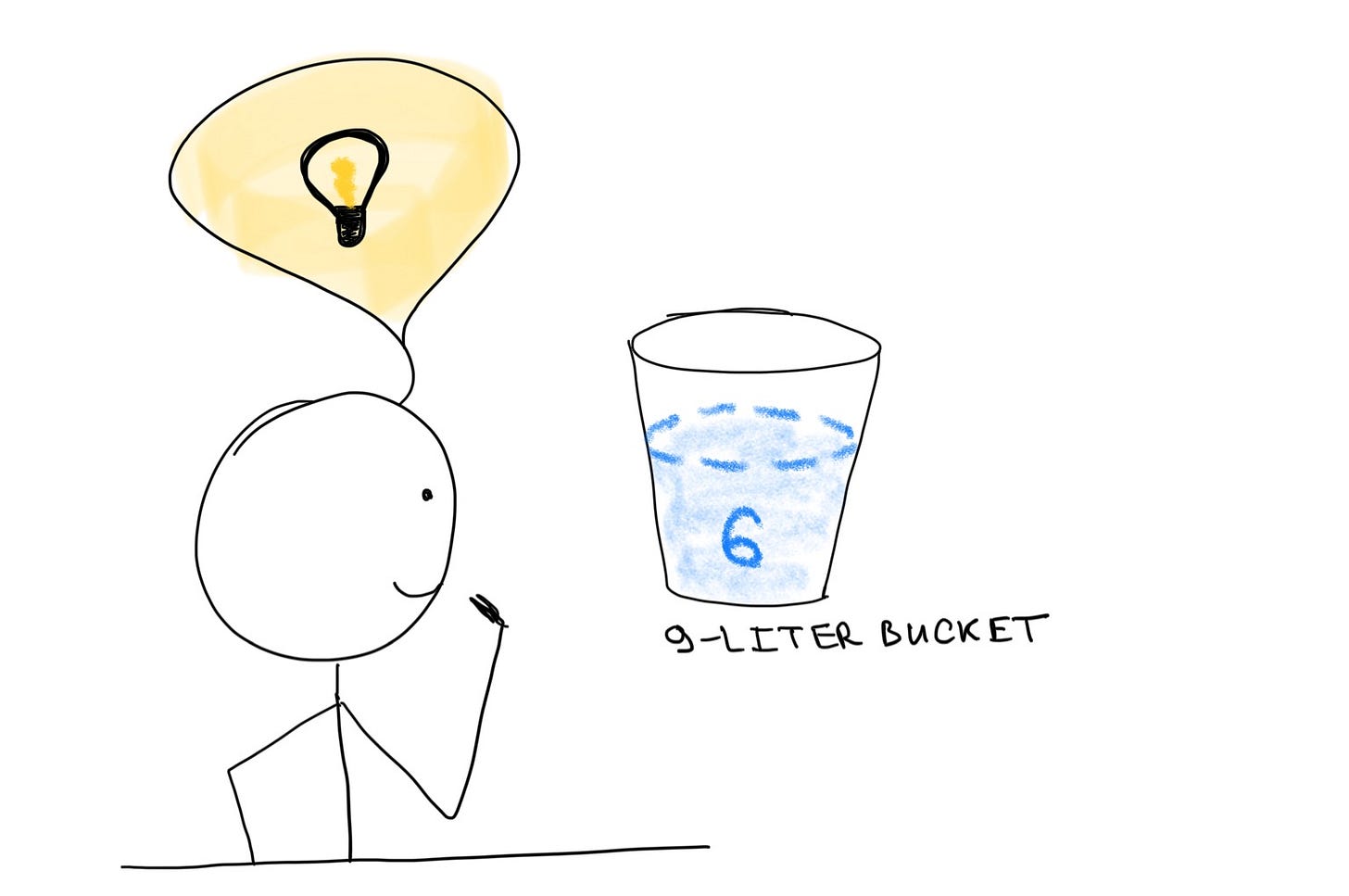
Now let’s work backwards.
You can begin by asking yourself:
“How in hell we ended up having six liters in a 9L water container?”
That’s an excellent question to ask because it has high suggestive value. This means that when you ask this question, your mind starts working out the problem on autopilot. We get six liters in a 9L water bucket by taking exactly three liters out of the full bucket.

Now you can continue going backwards:
“How can we take exactly three liters out of a 9L water bucket if we’ve only got a 4L bucket?”
This question is high in suggestive value again; it structures your thought towards solving this narrow part of the problem. The way to take out precisely three liters of water from the 9L bucket is to turn our 4L container into a 3L container somehow so that we can fill it out with precisely three liters. And the way to do that is to have one liter of water there already.
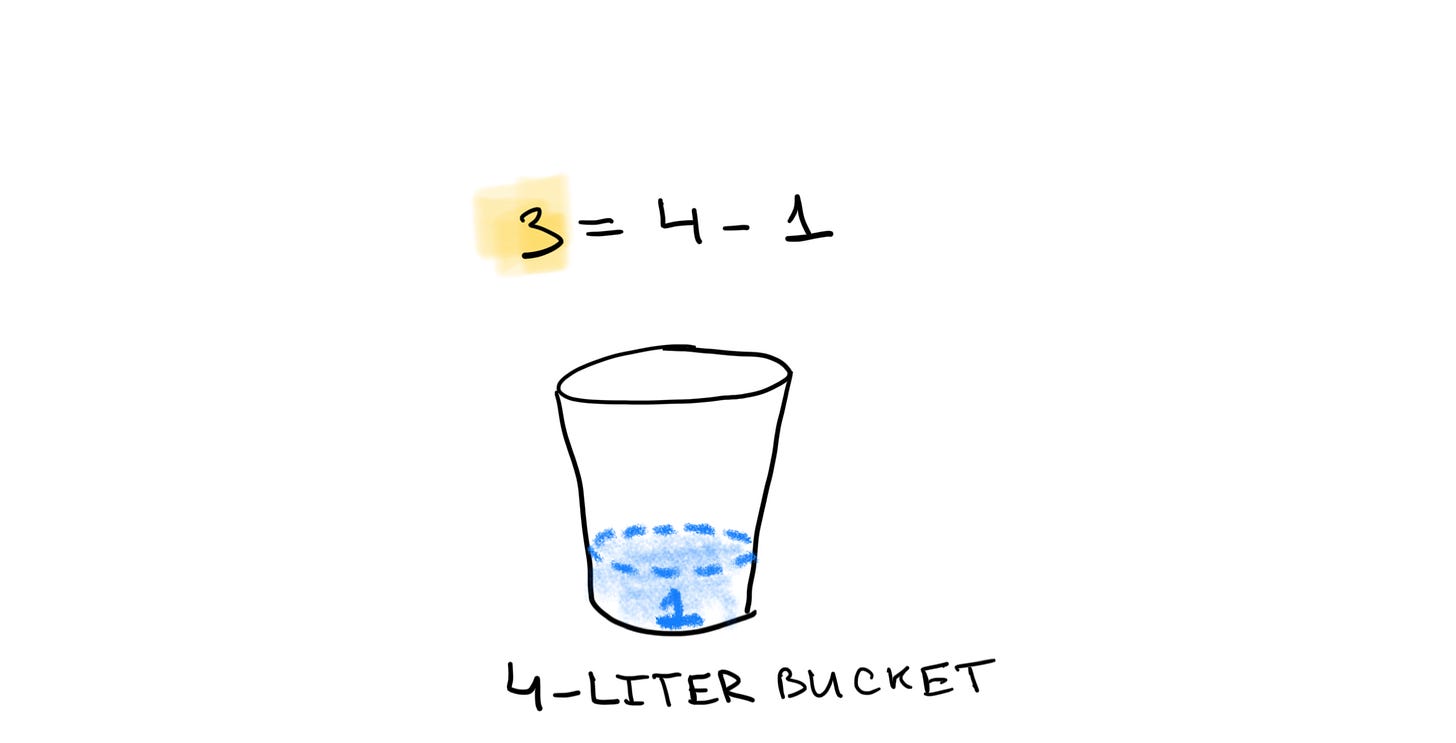
The final question is:
“How to fill in our 4L water bucket with one liter of water?”
And given that we’ve got 9 and 4, that’s a first-grade math problem to solve. 9-4-4=1.
By thinking backwards, we turned a hard problem of having to somehow bring six liters of water from the river into “how to measure one liter of water if we have buckets of nine and four.”
To recap: never start from the mouse.
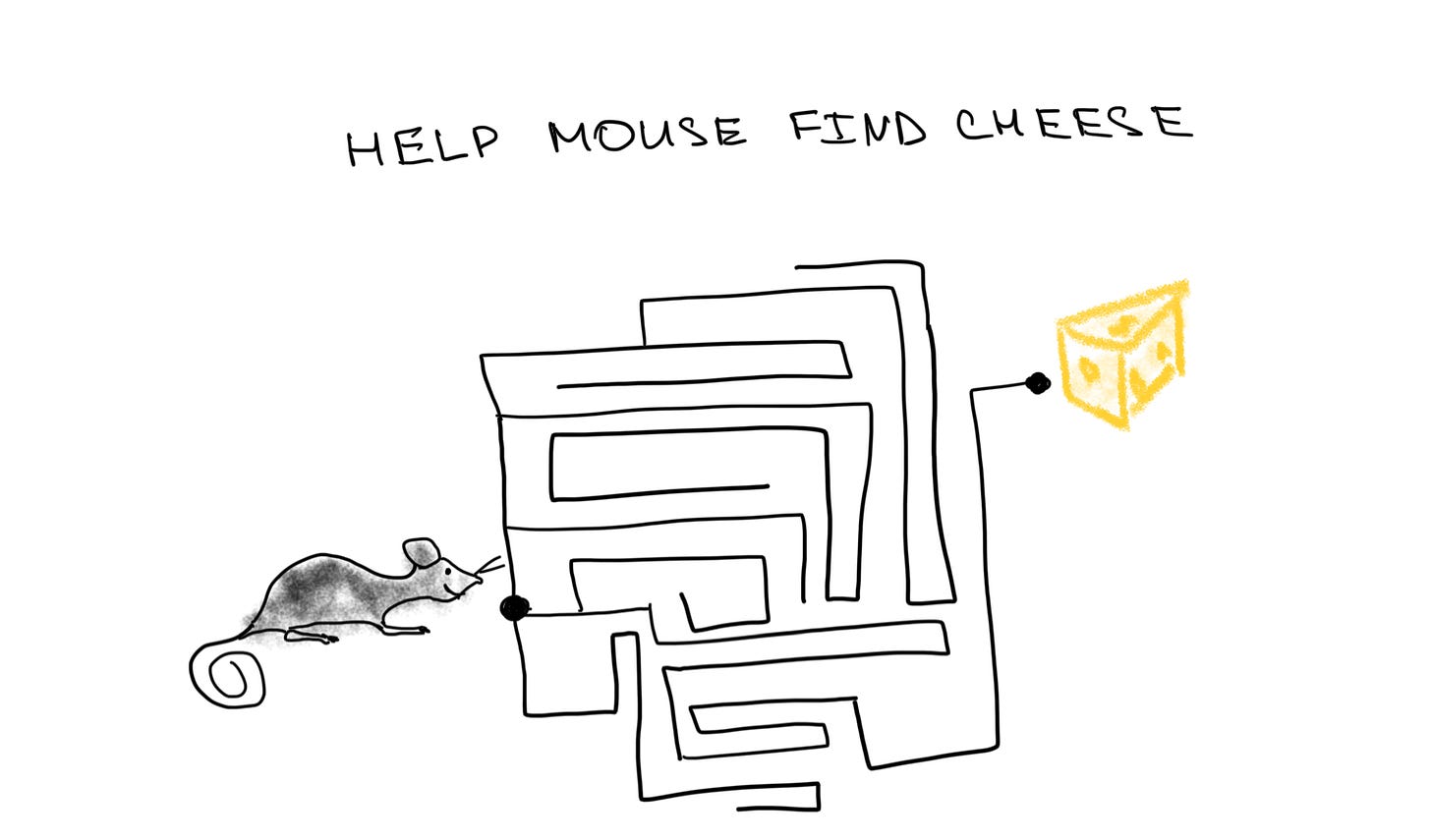
Now pause for 20 seconds and answer the questions below.
I integrate questions into the text because they improve your understanding and remembering by 2x.
You literally think yourself smarter.
- What does it mean to work backwards through problems?
- Why brainstorming doesn’t work for complex problems?
- What’s the water buckets problem is about?
How to plan projects by thinking backwards
Herbert Spencer wrote that the value of knowledge is relative to its application. This means that learning Latin is useless unless you’re going to travel back in time and talk to Francis Bacon who hated English.
It’s the same with thinking models.
They are useless if you don’t know how to apply them to your life. So let’s explore how thinking backwards helps to deal with the problem you face every day—planning projects.
Why planning is more important than execution
The best way to solve a problem is to prevent it from happening.
That’s why planning is more important than execution. It clarifies what has to be done so that you can avoid problems instead of dealing with them.
But most people don’t plan anything.
They’re running through their lives with heads on fire. Their excuse is that they can barely keep up with the work they’ve already got. These folks are like a mad woodcutter with a blunt ax.
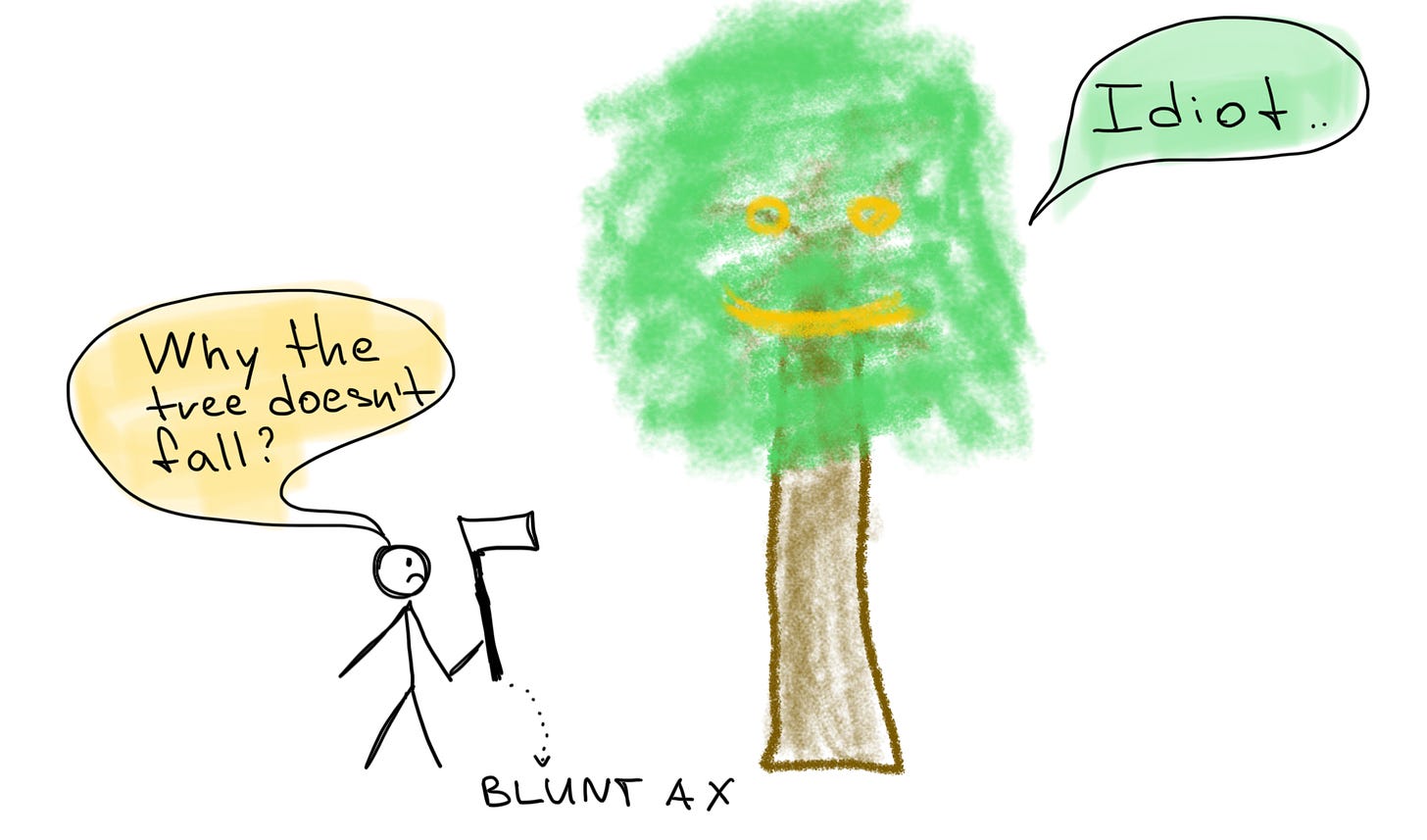
They don’t understand that the value of planning is not in the plan itself but in the process. It structures your thought towards the outcome of the project to understand exactly what you should be doing and when.
What is a project
To understand project planning better, let’s first define what a project is.
A project is an outcome that you want to achieve within a year that requires two or more actions to get done (that’s the definition of David Allen, and I think it’s pretty good). For example, “write a post for bare hands” is a project because it includes writing, editing, drawing illustrations, grammar checks, publishing, promoting, etc.
This definition is broad on purpose; it helps you track open loops that suck up your cognitive power. That’s why you mind up having hundreds of them if you apply David’s definition to your life.
But there’s a catch. If you correctly planned each of your projects, you’d realize that most of them are redundant.
Why to clarify the purpose
Most people just start doing the thing when it shows up.
But very few people ask what’s the purpose of the thing to be done before jumping in. And even fewer folks clarify the outcome that they want to achieve as a result of doing it.
That’s why people end up feeling stressed and overworked; they’re doing too much. If they stopped for a second to clarify the purpose, they’d realize that there’s another thing that can be done to achieve the exact same goal with less time, effort, and costs. Or that there’s no reason to do it at all.
The value of the initial project idea is to help you identify the purpose of the project. And when you achieve that understanding, you can get rid of your initial idea for a project and do that better thing instead. This is hard because of the sunk cost tendency, especially if you repeat this exercise for projects you’ve had for months already.
Thus, you must start with why. Because if you don’t know the purpose, then you have no filter for actions. You will be brainstorming and taking every path that’s in front of you instead of working backwards.
How to define the outcome
When you clarify the purpose of the project, you inevitably start thinking about its outcome.
Clarifying the outcome helps to structure your thought towards solving the puzzle. You get to employ your subconscious to think about it when you’re not working—you’ve probably noticed that best ideas come not when you sit at the table and stare at your laptop. And you also start using your reticular formation area of the brain to spot opportunities in the world that might help you achieve what you want.
Here are three questions that might help:
- What is a successful outcome here?
- How do I want this to look when done?
- If I had to delegate this to someone, what would a good outcome of their work look like?
Once the outcome is clarified, you can begin working backwards.
How to land a dream job by working backwards
Let’s say you want to get a new job.
If you’re good at the purpose level and clearly understand why you absolutely must get this job, then you can transition to thinking backwards from the outcome. You start at the very end and then go back in time.
The end result of this job project is you standing in the office of your dream employer and happily signing your dream offer. That’s the end goal; that’s the outcome you want to get.
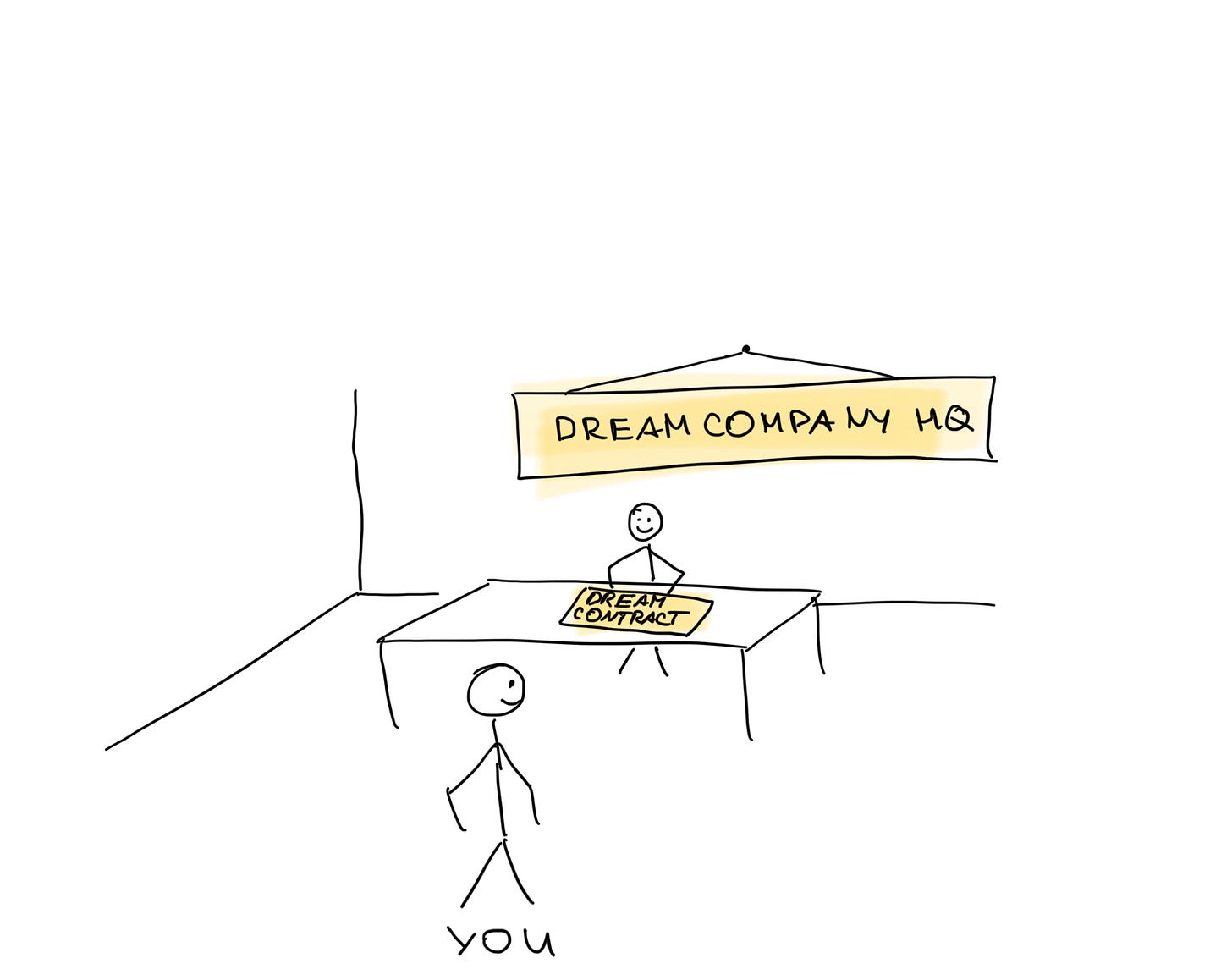
Now let’s think backwards.
How did you end up in that office?
Don’t get bogged down with details like “oh, I got a cab to get there,” but think broadly about steps in the process of yourself getting a dream job.
You’ve probably got a late-night call from your future boss who shouted, “Hey you’re awesome we’ve made our decision please come work for us!!”
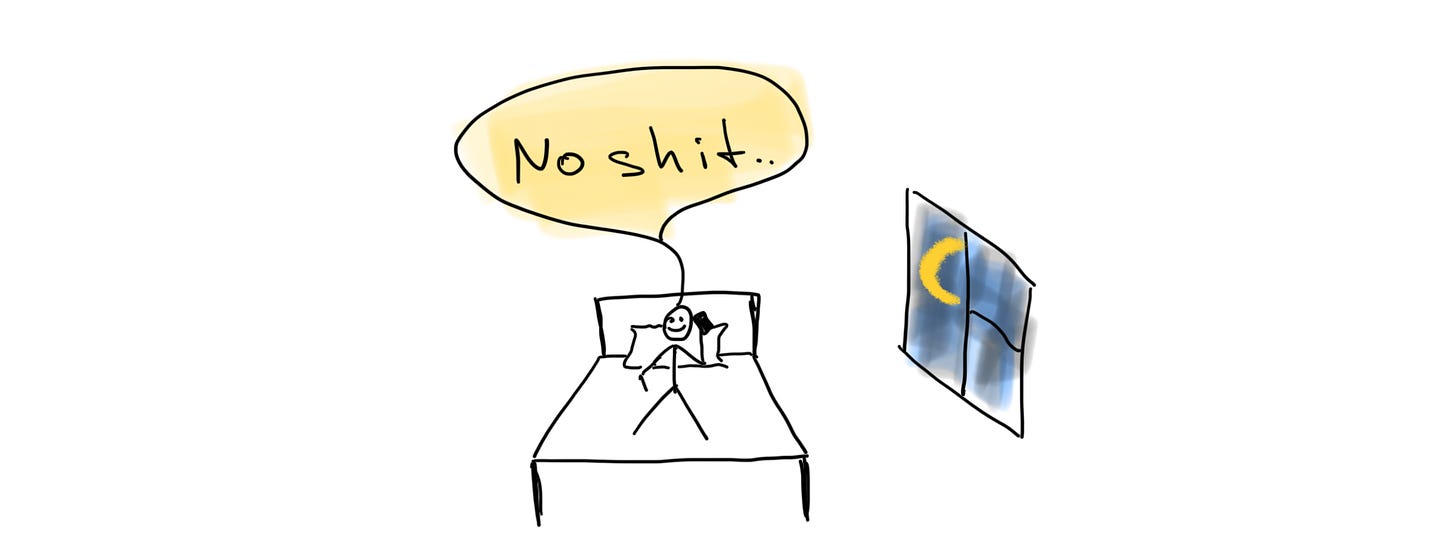
What happened before that?
They must have somehow decided that you’re great. Usually, companies do that through interviews. This means you must have nailed that interview before your future boss was so excited to call you up to come by and sign the paperwork.

What was before the interview?
You somehow got invited there, and something made them pick you and not the other guys. And before they invited you for an interview, they must've somehow heard of your existence.
You either got introduced through a warm connection at the company or sent them a full-size 3D printed copy of yourself with a recorded speech on how awesome you are (this might actually be a decent idea).

If you combine all these steps, you get a process hierarchy of getting a job. And it’s much easier to do it backwards because you have less opportunity for error when thinking backwards through these steps. You’re already on the right track.
Once you’ve identified all the steps, you know exactly what to do. You can plan activities in parallel. But, most importantly, you can apply inversion. You can take each step of the process and ask:
“What should I do to fail this step?”
This structures your thinking to identify and prevent risks. You can avoid making those errors because you’re now aware of them, and you can flip back the answers to get some interesting ideas for how to nail each step of the process (sending a full-size 3D copy of yourself is one).
Landing a dream job is just one application of working backwards.
You can think of hundreds if you walk through your day—from sending an email to someone (what’s the outcome that I want to get out of sending this email?) to writing an article (what’s the change that I want this article to create in a reader’s mind?).
But to do that, you must remember that this tool exists. Thus, answer the questions below. They are designed to help you retain what you’ve just read instead of forgetting 80% of it tomorrow morning.
- What’s the definition of a project?
- What’s deal with clarifying the purpose of the project?
- Why do you need to clarify the outcome?
- How should you think about getting a new job?
- What does inversion mean when applied to thinking through problems?
Think backwards,
Vasili